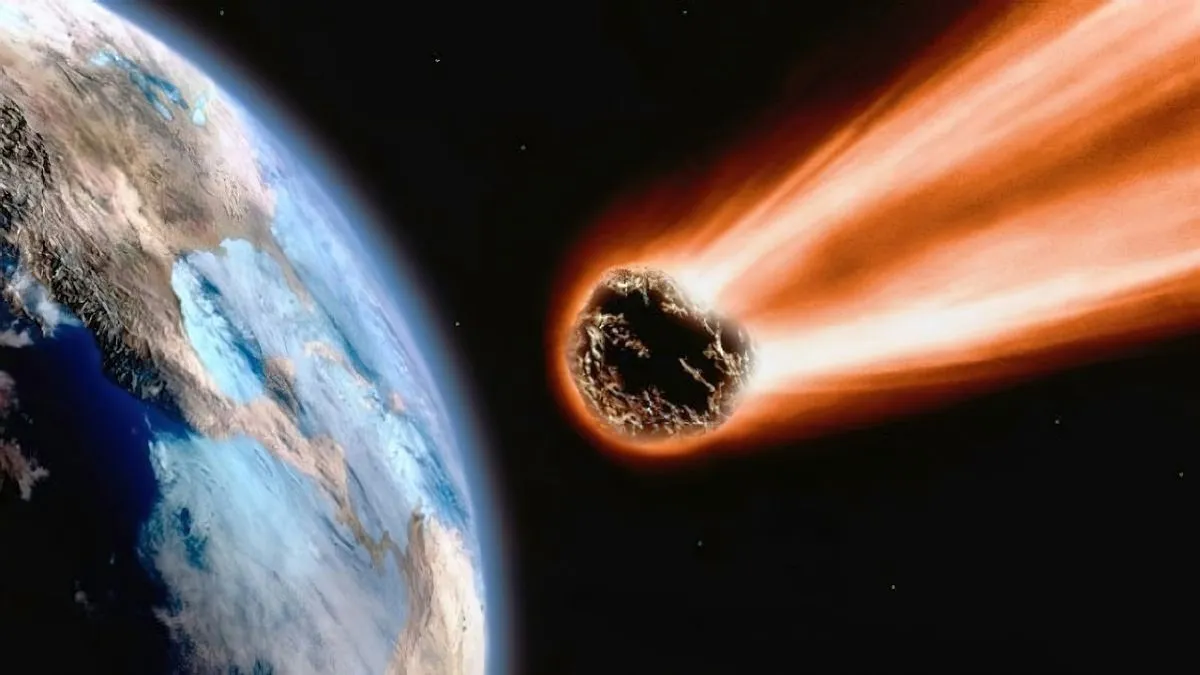- By Supratik Das
- Tue, 20 May 2025 04:09 PM (IST)
- Source:JND
A gigantic asteroid, Asteroid 2003 MH4, is to have a close flyby of Earth on May 24, 2025, prompting increased monitoring by NASA’s planetary defense teams. Though not an immediate threat, the sheer size and speed of this space rock have placed it under the global spotlight. Measuring around 335 metres, the same as three football fields in terms of length this asteroid will shoot at 14 kilometres per second or 50,400 km/h.
NASA's Jet Propulsion Laboratory (JPL) has identified Asteroid 2003 MH4 as a Potentially Hazardous Asteroid (PHA). Experts describe any asteroid more than 150 metres in diameter and coming within 7.5 million kilometres of Earth as a PHA. MH4 meets both measures. As it makes its next flyby, the asteroid will come 6.68 million kilometres from Earth roughly 17 times nearer than the Moon. While this may seem far by human measurements, it’s considered relatively close in astronomical terms.
Asteroid 2003 MH4 is a member of the Apollo family of asteroids, one of the categories of near-Earth objects (NEOs) whose orbits cross that of Earth. The group is named after asteroid 1862 Apollo, which was found in 1932. It has more than 21,000 known members, many of which are constantly tracked for their unstable orbital patterns. Due to their orbits frequently crossing that of Earth, Apollo asteroids are considered crucial to planetary defense programs. While present speculations indicate no danger of collision, researchers are not taking risks. The asteroid takes 410 days to orbit the Sun. Even slight variations in its path, through gravitational forces or effects such as the Yarkovsky effect (heat-induced drift), could theoretically make it closer to Earth in future flybys. NASA's Center for Near-Earth Object Studies (CNEOS), working alongside observatories and international partners, monitors the movement of the asteroid. They are keeping a close watch with orbital modeling and radar imaging.
Also read: Ice In Outer Space? NASA Reveals Frozen Water In Distant Star System | Here's All You Need To Know
Asteroid 2003 MH4 is just one of several celestial bodies that astronomers are monitoring. For example, Asteroid Apophis, which was originally feared to hit Earth in 2029, has been eliminated as a risk after detailed observation. Asteroid 2025 FA22 is expected to pass extremely close in 2089, though the chance of impact currently stands at just 0.01 percent. Although Asteroid 2003 MH4 is not an immediate threat, its dimensions and velocity highlight the importance of continuous observation and international collaboration in planetary defense measures.

